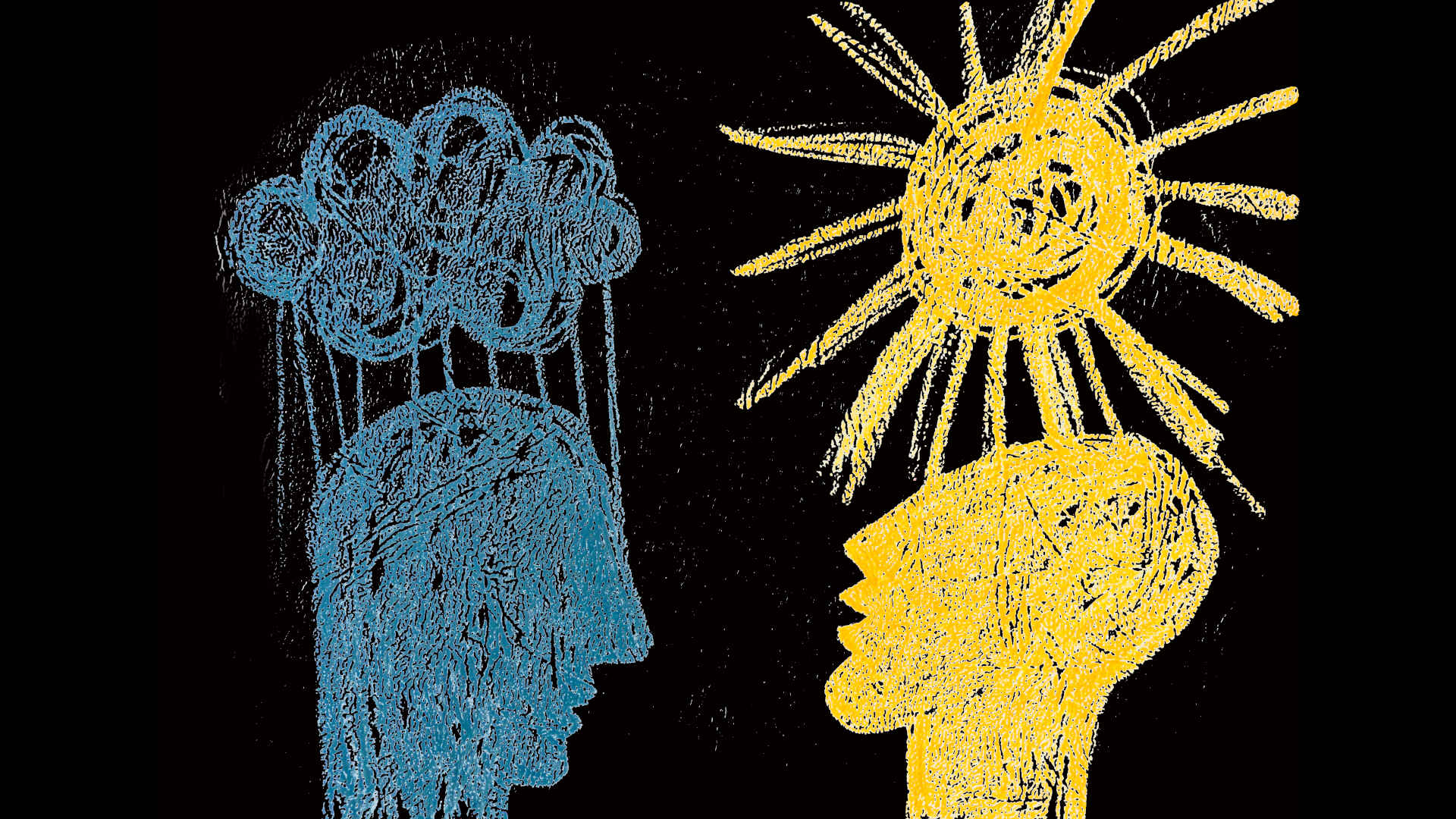Hope is often said to be the best medicine, essential to getting people through difficult times. So it’s unsurprising that it has seemingly become a mantra of climate communication in recent years. Instilling hope, the theory goes, is key to motivating people to act; without it, people will succumb to despair and apathy.
The emphasis on hope may help explain why so many climate scientists keep their predominantly grim views about our future climate to themselves, while cautioning against what they perceive to be doom-and-gloom narratives in social media (although many scientists are genuinely optimistic). Last year, when a major report by the Intergovernmental Panel on Climate Change concluded that we’ll likely fail to contain warming to 1.5 degrees Celsius above pre-industrial temperatures, many scientists — and journalists — nonetheless presented the 1.5 degree goal as achievable. In reality, most scientists believe that warming will reach at least 2.5 degrees Celsius, according to a recent survey by The Guardian. Being unhopeful about climate change is so unpopular that I myself, an environment-focused journalist, am fearful of publicly admitting my own pessimistic outlook.
But social science and psychology research presents a more nuanced picture of the emotions that drive action. Certainly, hope is an important psychological motivator for many people, and relying solely on doom-and-gloom messaging could push some people into despondency. But not all hope is equally effective; wishful thinking often falls short. And certain breeds of pessimists are actually highly motivated by threat-centered communication.
What matters, it seems, is not so much whether a person feels hopeful or unhopeful about the future, but how constructively they deal with their emotions. “How people interpret their emotions and rationalize the threat of climate change might be the determining factor in whether it leads to action or inaction,” Matthew Ballew, an environmental psychologist at Pierce College in Puyallup, Washington, wrote to me in an email. In this light, effective climate communication means not only highlighting the rosier end of climate trajectories and the solutions that may help get us there, but also the possibility of a bleak future and the massive amount of work it will take to avoid it.
These nuances of climate emotions were illustrated in a 2019 study that Ballew co-authored, which surveyed American adults during the Obama administration. One arm of the survey encompassed 1,310 adults demographically representative of the U.S. population, focusing on people who believed that climate change is happening.
Not all hope is equally effective; wishful thinking often falls short. And certain breeds of pessimists are actually highly motivated by threat-centered communication.
The researchers distinguished between participants with what they call constructive hope (who agreed to statements like “humanity will rise to the occasion”) and those with false hope (“we don’t need to worry about global warming/climate change because nature will take care of it”). They similarly distinguished between constructive doubt (“most people are unwilling to take individual action”) and fatalistic doubt (“humans can’t affect global warming/climate change because you can’t fight Mother Nature”). Participants were then asked how likely they’d be to contact their government officials, sign petitions demanding more climate action, or support policies like regulating carbon emissions or instituting tax rebates for electric vehicles. Remarkably, the authors found that constructive doubt and constructive hope both correlated with increased policy support and willingness to take political action, whereas false hope and fatalistic thinking had a negative association.
The study is limited in that it looked at people’s self-reported willingness to engage in climate action rather than their actual behavior, noted co-author Brittany Bloodhart, a social psychologist at California State University, San Bernardino. And it’s not clear if feeling doubtful necessarily caused people to be more willing to take action, or if the two correlate for other reasons. Nevertheless, the relationship between constructive doubt and political engagement, the authors wrote, suggests it may be worthwhile to recognize the difficulties inherent in addressing climate change.
Interestingly, a recent survey of more than 2,000 U.S. adults found that people experiencing psychological distress related to climate change were more likely to engage in collective climate change action or to report a willingness to do so. And other research has found a positive correlation between climate anxiety and climate action. While anxiety or distress are not exactly the same as doubt or pessimism, they’re similarly believed to cause people to shut down, when in fact they may be a helpful driver of action. “The people that I know who are really seriously working on these issues and who are engaging in climate change activism,” Bloodhart said, stressing that this is her personal observation, “they have a little bit of hope, but they mostly are pretty pessimistic and concerned.”
So why do people choose to act when they believe the worst outcomes are the most likely?

Some light may come from psychological research on so-called defensive pessimists. While run-of-the-mill pessimists might become immobilized and despondent by focusing on negative outcomes, defensive pessimists take action to avoid them. “They use their worry and their anxiety about that worst possible outcome to drive them to take action so that it never becomes a reality,” said social and health psychology researcher Fuschia Sirois of Durham University. In one 2008 experiment, for example, defensive pessimists performed relatively poorly in a word puzzle when prompted to imagine a positive scenario, but they did much better, on average, when they were prompted to imagine the opposite, negative effect.
In another study that tracked university students for over four years, researchers found that defensive pessimists had higher self-esteem compared to other students with anxiety, and even eventually reached nearly similar levels of confidence as optimists. Research comparing optimists and defensive pessimists has often found similar benefits, although pessimists tend to have a less enjoyable journey towards achieving outcomes, Sirois added.
Although there is no data on how defensive pessimists cope with collective action problems like climate change, existing studies suggest they may respond well to clear information about threats — provided it’s paired with guidance on how their individual actions can help avoid negative outcomes. “For people who are defensive pessimists, that’s what’s going to mobilize them to action,” Sirois said.
None of this is to say that purely doomsday messaging can’t have counterproductive outcomes: One recent survey of 59,440 people from 63 countries found that messages focusing solely on the catastrophic nature of climate breakdown performed more poorly than solutions-oriented messaging in motivating climate action. Fortunately, however, surveys of the American public do not indicate a rise in fatalism in the population. The percentage who believes it’s too late to act on climate change has hovered around 13 percent for years, social scientist John Kotcher of George Mason University wrote in an email. “At the very least, this calls into question whether there’s actually a growing sense of fatalism among Americans, despite the online discourse and concern around doom-and-gloom messaging.”
One poll suggests that although 64 percent of Americans say they’re at least “somewhat worried” about climate change, less than half of those report they are “very worried.”
It just means that we shouldn’t hold back from clearly communicating the risk at hand and the scale of work that lies ahead. Indeed, some of Kotcher’s studies have found that threat information can help increase public engagement with climate change in productive ways. Research from health psychology, meanwhile, suggests that people need both explicit information about the threat — for instance, that smoking can cause lung cancer — and what they can do to avoid it. Highlighting the solutions that are already underway is also important. Some behavioral experiments suggest that people are more willing to help tackle a problem if they know that they’re not starting from scratch.
If anything, the public is not worried enough about climate change, said Lorraine Whitmarsh, an environmental psychologist at the University of Bath. And while it’s hard to pinpoint the right amount of hope, Whitmarsh thinks people tend to be overly optimistic. One poll suggests that although 64 percent of Americans say they’re at least “somewhat worried” about climate change, less than half of those report they are “very worried.” Whitmarsh said she believes this stems from techno-optimism among policymakers and the media that has fostered a widespread belief that incremental changes through recycling or green technologies will be enough, without requiring behavioral changes such as reducing meat consumption or using more public transportation. “Maybe a lot of those people are acknowledging that there is a major problem but they think that — because they’ve heard it from politicians and many other people — technology will save us,” Whitmarsh said, adding, “and like, there’s not much that I can do as an individual.”
This is why climate communication should not just be about instilling hope. It means also confronting the worst possible outcomes and the tough, transformative work that lies ahead. That means inspiring not only the optimists among us but the pessimists, too.
Katarina Zimmer is a science and environment journalist. Her work has been published in Knowable Magazine, The Atlantic, National Geographic, Grist, Nautilus Magazine, and more.












Comments are automatically closed one year after article publication. Archived comments are below.
“Constructive hope who agreed to statements like “humanity will rise to the occasion”. This is not even debateable. Humanity will deal with climate change even if all the ice melts as it has done before. And mammals still evolved. Poor people disproportionately will suffer but human life will go on.